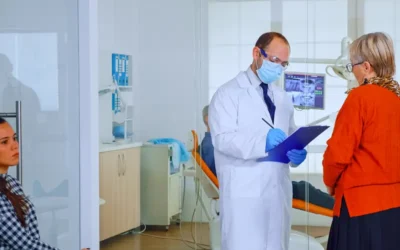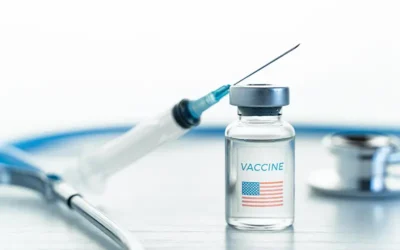From simple X-rays to highly complex MRIs, CT scans, and nuclear medicine studies, radiology involves a wide range of imaging procedures. Each procedure has its own set of codes and guidelines for documentation and billing. Modifiers play a crucial role in radiology billing as they provide additional information to payers and help ensure proper reimbursement for the services provided. However, one of the most common reasons for lost reimbursement in radiology is improper modifier usage. That’s why healthcare providers often rely on outsourced medical billing services ensure accurate claim submission. Skilled certified radiology coders and billing specialists can ensure proper coding and modifier usage and compliance with regulations, leading to optimal reimbursement for radiology services.

Partner with our expert team and experience seamless radiology billing solutions!
Role of Modifiers in Radiology Billing
The CPT codes for radiology procedures/services are:
70010-76499 Diagnostic Radiology (Diagnostic Imaging) Procedures
76506-76999 Diagnostic Ultrasound Procedures
77001-77022 Radiologic Guidance
77046-77067 Breast, Mammography
77071-77092 Bone/Joint Studies
77261-77799 Radiation Oncology Treatment
78012-79999 Nuclear Medicine Procedures
Modifiers provide a way to report to payers that a service or procedure has been performed and changed due to specific circumstances. Modifiers play a crucial role in radiology billing as they clarify and provide context for the services rendered, helping to ensure accurate reimbursement for the services provided. Appended to CPT codes, modifiers provide specific details about the location where the service was provided, multiple procedures performed, or the professional component of the service.
Top Modifiers for Reporting Radiology Services
Here are some commonly used modifiers in radiology billing and guidance on their usage:
Modifier 26 & TC – Radiology is the ideal example to explain the correct use of modifier 26 & TC (www.slu.edu). Most radiology codes, including ultrasounds, x-rays, CT scans, magnetic resonance angiography, and magnetic resonance imaging, may be billed with modifier 26 or TC.
- 26 – Professional component: Certain procedures and services have both a professional and a technical component. Modifier 26 represents the professional component and should be appended to the code on the claim when a radiologist exclusively performs image interpretation, without providing the equipment. This commonly happens when the radiologist is reviewing images for a facility such as a hospital, ambulatory surgery center (ASC), or doctor’s office, which owns the machinery and provides the personnel, but relies on the radiologist for image interpretation and report generation.
-
- TC – The technical component includes all necessary equipment, materials, staff, and expenses associated with carrying out the procedure. When only the technical component is being billed, the TC modifier should be appended to the relevant CPT code. TC represents only the institutional charges when there is an expense to facility.
As an example, consider this scenario: A provider has an office and purchased an X-ray machine. He employs a tech to perform the testing, but sends the images to a radiologist to read and report on. In this situation:
-
-
- The provider’s office bills for the radiology service with a TC modifier.
- The radiologist reading and reporting on the service will bill for the same service with a 26 modifier.
-
When not to use modifier 26: AAPC provides the following guidance on when not to use the 26 modifier –
-
- If a physician provides both the professional component (supervision, interpretation, report) and the technical component of a service, that physician should report the global service – the procedure code without the TC or 26 modifier (for example, an X-ray of a broken bone is taken in the orthopedic surgeon’s office).
- Do not append modifier 26 if there is a dedicated code to describe only the professional/physician component of a given service.
- Do not append modifier TC if there is a dedicated code to describe the technical component, for example, 93005Electrocardiogram; tracing only, without interpretation and report.
- 50 – Modifier 50 is defined as a bilateral procedure performed on both sides of the body. “Both sides” refers to right and left sides and does not mean front and back (AP/PA and lateral). Bilateral procedures performed at the same session/service, such as:
- Right knee – Left knee
- Right kidney – Left kidney
Do NOT use this modifier when the CPT code descriptors already defines the code as bilateral, as it is expected to be performed on both sides.
-
- LT/RT, left side/right side – Depending on the side of the body that is imaged, one of these modifiers is be appended to the code to reflect only one side was imaged.
An article in Radiology Today advises that since some payers may not recognize modifier 50 for indicating bilateral procedures, it is necessary to report two separate line items: one with modifier LT and one with modifier RT. The use of modifier 50 is more common, but the specific usage is typically determined by the payer’s guidelines. Providers need to communicate with their payers, Medicare administrative contractors (MACs), and Medicaid integrity contractors (MICs) to understand their requirements because some MACs and MICs may not accept modifier 50 under any circumstances, while others may not accept LT/RT.
In general, commercial insurance plans will expect to see modifier 50 when a service is performed bilaterally and the procedure is not explicitly designated as bilateral. If the service is performed on just one side, the payer will anticipate modifier LT or RT.
-
- 51 – The 51 modifier is used to identify multiple procedures performed during the same session or encounter. It signifies that multiple procedures were done that are not normally reported together but are appropriate under the circumstances. Documentation must support:
- Different anatomic site/organ system
- Different encounters on the same day
- Separate incision/excision
- Separate lesion/injury
- 51 – The 51 modifier is used to identify multiple procedures performed during the same session or encounter. It signifies that multiple procedures were done that are not normally reported together but are appropriate under the circumstances. Documentation must support:
When not to use modifier 51: If there is another, already established modifier that better describes the circumstances, it must be utilized rather than 59. For example, modifier 59 should not be used when one of the -X modifiers describes the reason for the distinct procedural service. As the -X{EPSU} modifiers are more specific versions of the -59 modifier, it is not appropriate to bill both the modifier 59 and a -X modifier on the same line (www.slu.edu).
-
-
- 59 –Modifier 59 is used to identify a separate service provided to a different anatomic site or a separate service provided on the same day, by the same physician during a separate patient encounter. Indications for use of modifier 59 are:
- distinct procedure/different encounter
- distinct procedure/different provider
- distinct procedure/different site
- 59 –Modifier 59 is used to identify a separate service provided to a different anatomic site or a separate service provided on the same day, by the same physician during a separate patient encounter. Indications for use of modifier 59 are:
-
Modifier 59 should only be used if a more descriptive modifier does not exist. For example, if a procedure is performed bilaterally, modifier 50 would be the more appropriate modifier.
While modifier 51 and 59 both apply to additional procedures performed on the same date of service as the primary procedure, modifier 51 differs from modifier 59 in that it applies to procedures that may be more commonly expected to be performed during the same session.
-
-
- 76– Modifier 76 is used to indicate that a procedure or service was repeated by the same physician or provider. It is used when original imaging service is performed again on the same day by the same provider.
-
Repeat Procedure by the Same Physician; use when it is necessary to report repeat procedures performed on the same day Used on procedure codes that cannot be quantity billed Report each service on a separate line, using a quantity of one and append 76 to the subsequent procedures The same physician must performs the services. Medicare considers two physicians, in the same group with the same specialty performing services on the same day as the same physician.
-
-
- 77 – Modifier 77 is used when the original imaging service is repeated by a different physician on the same day as the original imaging service (Note: Medicare considers all physicians in the same group practice who are in the same specialty as the same physician).
-
Proper knowledge about the codes for billing imaging services, modifier usage, and local carrier rules is essential to ensure appropriate reimbursement. Additionally, your documentation should support the services provided. Collaborating with an experienced radiology medical coding company can significantly enhance your organization’s ability to achieve accurate coding and optimal reimbursement. It will reduce the likelihood of claim denials and potential payer take-backs, thereby enhancing your revenue cycle management.
Unlock your medical practice’s financial potential with tailored medical billing solutions!





